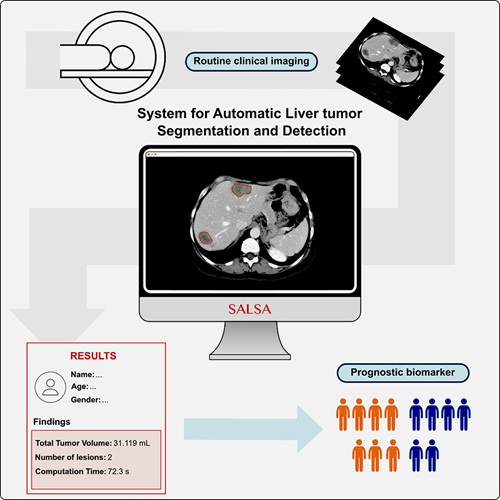Bone Suppression and CAD Software Improves Lung Nodule Detection on Chest X-Ray
|
By MedImaging International staff writers Posted on 19 Dec 2012 |
Three studies reported that using bone suppression and computer-aided detection (CAD) software can significantly improve the detection of lung nodules on chest X-ray images.
CAD performed well on images captured by both portable and upright X-ray machines in the studies, and that most false-positive marks—the marking of portions on the chest X-ray that are not lung nodules—call radiologists’ attention to other significant abnormalities, including serious lung disorders, and to medical devices in or on the chest that radiologists would be able to swiftly disregard. The studies’ findings were presented Radiological Society of North America (RSNA) annual meeting held November 2012 in Chicago (IL, USA). Riverain Technologies’ ClearRead software was used in each of the studies.
Riverain’s ClearRead software suppresses the ribs and clavicles on traditional chest X-ray images, providing radiologists with a clear, unobstructed image of the lungs and exposing abnormalities that may be a sign of disease. The software is easy to install and adopt, requiring no additional imaging equipment or staffing, and no additional radiation exposure to patients. It can be used to immediately enhance images generated by all X-ray machines throughout a hospital or health system.
In a study at Radbound University Nijmegen Medical Center (RUNMC; The Netherlands), five attending radiologists and three radiology residents who were not skilled with the Riverain Technologies (Dayton, OH, USA) software detected more confirmed lung nodules utilizing ClearRead bone suppression 2.4 software than when they evaluated the X-ray images on their own.
The radiologists read 300 chest X-ray images with and without bone suppression (111 X-rays with solitary lung nodules and 189 control cases with no nodules). They identified 79% of the lung nodules with bone suppression, with about 0.3 false positive per image compared to 71% detection of lung nodules and 0.21 false positive per image when they reviewed the X-rays on their own.
“The detection of hard-to-find nodules classified as ‘moderately subtle’ and ‘subtle’ was especially improved,” said Steven Schalekamp, MD, a PhD student in the department of radiology of RUNMC. “The radiologists using the bone-suppression software found 26% of the lung nodules that were missed entirely on conventional X-ray images.”
In a separate RUNMC study involving 300 radiographs and eight readers, the radiologists’ performance also improved when they read the images using Riverain’s CAD software, ClearRead +Detect 5.2, which circles suspected lung nodules on bone-suppressed X-ray images. The radiologists accurately detected 79% of 111 lung nodules with CAD, versus 73% when reviewing the bone-suppressed image without CAD.
The radiologists’ false-positive rate per image was 0.28 when they used CAD and bone suppression combined, and 0.23 when they used bone suppression without CAD. ClearRead +Detect found more than half of the nodules that were missed by the radiologists.
In a University of Chicago Medical Center (IL, USA) study of 608 unselected, consecutive chest X-ray images, (479 X-rays with abnormalities, such as lung nodules, other lung diseases and scars; and 129 X-rays without significant abnormalities), Riverain’s ClearRead +Detect 5.2 CAD software on its own, without radiologist interpretation, detected 72% of lung nodules present, or 82 of 114 nodules. The software detected a majority of the nodules regardless of whether the image had been captured using a portable or upright X-ray machine, and even when other abnormalities, including underlying lung disease, were present.
“CAD found the majority of lung nodules in this large study, which simulates a real-world, clinical setting where the use of portable X-ray images and the presence of other abnormalities in patients’ chests make lung nodule detection challenging,” said Steve Worrell, Riverain’s chief technology officer.
The CAD software had 1.3 false-positives per image (0.7 on X-rays without significant abnormalities and 1.5 on images with abnormalities). Forty-one percent of the false-positives across all radiographs indicated other notable pathologic changes, including fluid in the lungs (edema), pneumonia, a partial or full collapse of a lung (atelectasis), other lung diseases, calcifications, and scars.
Nineteen percent of the false-positive marks were attributed to medical devices in or on the chest, including electrocardiogram leads and catheter ports. As Dr. Schalekamp’s study suggests, the number of false positives actually reported in a clinical environment would be lower because radiologists use their judgment to rapidly reject automatically generated marks that are caused by grossly abnormal tissue or medical devices.
“We expect that after a learning period, radiologists would be able to dismiss false-positive CAD marks very quickly,” Dr. MacMahon said. “We know that small cancers are often visible in retrospect but were not detected on earlier X-rays,” Dr. MacMahon added. “Routine use of bone suppression and CAD on chest X-rays will reduce the chances of a cancer being missed, thus improving the likelihood of diagnosing unsuspected early-stage disease.”
Related Links:
Radbound University Nijmegen Medical Center
Riverain Technologies
University of Chicago Medical Center
CAD performed well on images captured by both portable and upright X-ray machines in the studies, and that most false-positive marks—the marking of portions on the chest X-ray that are not lung nodules—call radiologists’ attention to other significant abnormalities, including serious lung disorders, and to medical devices in or on the chest that radiologists would be able to swiftly disregard. The studies’ findings were presented Radiological Society of North America (RSNA) annual meeting held November 2012 in Chicago (IL, USA). Riverain Technologies’ ClearRead software was used in each of the studies.
Riverain’s ClearRead software suppresses the ribs and clavicles on traditional chest X-ray images, providing radiologists with a clear, unobstructed image of the lungs and exposing abnormalities that may be a sign of disease. The software is easy to install and adopt, requiring no additional imaging equipment or staffing, and no additional radiation exposure to patients. It can be used to immediately enhance images generated by all X-ray machines throughout a hospital or health system.
In a study at Radbound University Nijmegen Medical Center (RUNMC; The Netherlands), five attending radiologists and three radiology residents who were not skilled with the Riverain Technologies (Dayton, OH, USA) software detected more confirmed lung nodules utilizing ClearRead bone suppression 2.4 software than when they evaluated the X-ray images on their own.
The radiologists read 300 chest X-ray images with and without bone suppression (111 X-rays with solitary lung nodules and 189 control cases with no nodules). They identified 79% of the lung nodules with bone suppression, with about 0.3 false positive per image compared to 71% detection of lung nodules and 0.21 false positive per image when they reviewed the X-rays on their own.
“The detection of hard-to-find nodules classified as ‘moderately subtle’ and ‘subtle’ was especially improved,” said Steven Schalekamp, MD, a PhD student in the department of radiology of RUNMC. “The radiologists using the bone-suppression software found 26% of the lung nodules that were missed entirely on conventional X-ray images.”
In a separate RUNMC study involving 300 radiographs and eight readers, the radiologists’ performance also improved when they read the images using Riverain’s CAD software, ClearRead +Detect 5.2, which circles suspected lung nodules on bone-suppressed X-ray images. The radiologists accurately detected 79% of 111 lung nodules with CAD, versus 73% when reviewing the bone-suppressed image without CAD.
The radiologists’ false-positive rate per image was 0.28 when they used CAD and bone suppression combined, and 0.23 when they used bone suppression without CAD. ClearRead +Detect found more than half of the nodules that were missed by the radiologists.
In a University of Chicago Medical Center (IL, USA) study of 608 unselected, consecutive chest X-ray images, (479 X-rays with abnormalities, such as lung nodules, other lung diseases and scars; and 129 X-rays without significant abnormalities), Riverain’s ClearRead +Detect 5.2 CAD software on its own, without radiologist interpretation, detected 72% of lung nodules present, or 82 of 114 nodules. The software detected a majority of the nodules regardless of whether the image had been captured using a portable or upright X-ray machine, and even when other abnormalities, including underlying lung disease, were present.
“CAD found the majority of lung nodules in this large study, which simulates a real-world, clinical setting where the use of portable X-ray images and the presence of other abnormalities in patients’ chests make lung nodule detection challenging,” said Steve Worrell, Riverain’s chief technology officer.
The CAD software had 1.3 false-positives per image (0.7 on X-rays without significant abnormalities and 1.5 on images with abnormalities). Forty-one percent of the false-positives across all radiographs indicated other notable pathologic changes, including fluid in the lungs (edema), pneumonia, a partial or full collapse of a lung (atelectasis), other lung diseases, calcifications, and scars.
Nineteen percent of the false-positive marks were attributed to medical devices in or on the chest, including electrocardiogram leads and catheter ports. As Dr. Schalekamp’s study suggests, the number of false positives actually reported in a clinical environment would be lower because radiologists use their judgment to rapidly reject automatically generated marks that are caused by grossly abnormal tissue or medical devices.
“We expect that after a learning period, radiologists would be able to dismiss false-positive CAD marks very quickly,” Dr. MacMahon said. “We know that small cancers are often visible in retrospect but were not detected on earlier X-rays,” Dr. MacMahon added. “Routine use of bone suppression and CAD on chest X-rays will reduce the chances of a cancer being missed, thus improving the likelihood of diagnosing unsuspected early-stage disease.”
Related Links:
Radbound University Nijmegen Medical Center
Riverain Technologies
University of Chicago Medical Center
Latest Imaging IT News
- New Google Cloud Medical Imaging Suite Makes Imaging Healthcare Data More Accessible
- Global AI in Medical Diagnostics Market to Be Driven by Demand for Image Recognition in Radiology
- AI-Based Mammography Triage Software Helps Dramatically Improve Interpretation Process
- Artificial Intelligence (AI) Program Accurately Predicts Lung Cancer Risk from CT Images
- Image Management Platform Streamlines Treatment Plans
- AI-Based Technology for Ultrasound Image Analysis Receives FDA Approval
- AI Technology for Detecting Breast Cancer Receives CE Mark Approval
- Digital Pathology Software Improves Workflow Efficiency
- Patient-Centric Portal Facilitates Direct Imaging Access
- New Workstation Supports Customer-Driven Imaging Workflow
Channels
Radiography
view channel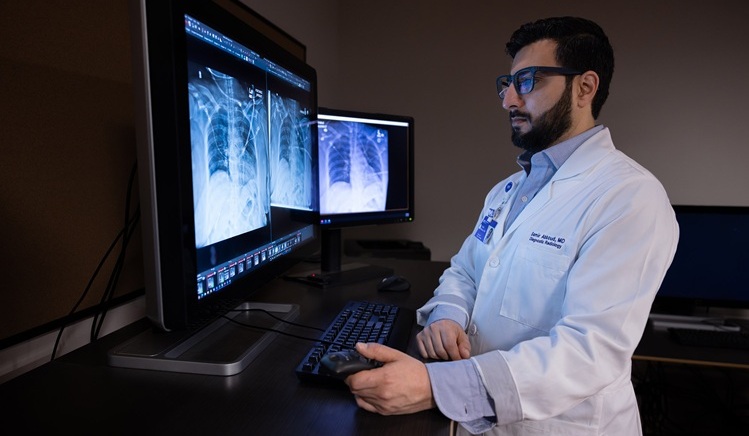
AI Radiology Tool Identifies Life-Threatening Conditions in Milliseconds
Radiology is emerging as one of healthcare’s most pressing bottlenecks. By 2033, the U.S. could face a shortage of up to 42,000 radiologists, even as imaging volumes grow by 5% annually.... Read more
Machine Learning Algorithm Identifies Cardiovascular Risk from Routine Bone Density Scans
A new study published in the Journal of Bone and Mineral Research reveals that an automated machine learning program can predict the risk of cardiovascular events and falls or fractures by analyzing bone... Read more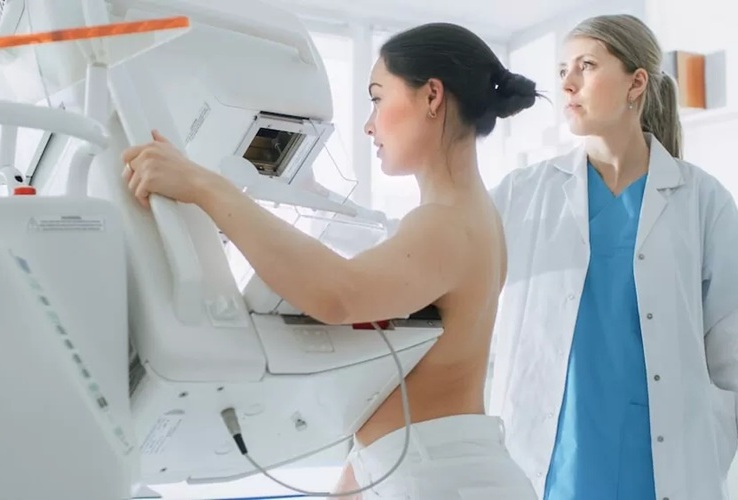
AI Improves Early Detection of Interval Breast Cancers
Interval breast cancers, which occur between routine screenings, are easier to treat when detected earlier. Early detection can reduce the need for aggressive treatments and improve the chances of better outcomes.... Read more
World's Largest Class Single Crystal Diamond Radiation Detector Opens New Possibilities for Diagnostic Imaging
Diamonds possess ideal physical properties for radiation detection, such as exceptional thermal and chemical stability along with a quick response time. Made of carbon with an atomic number of six, diamonds... Read moreMRI
view channel
New MRI Technique Reveals Hidden Heart Issues
Traditional exercise stress tests conducted within an MRI machine require patients to lie flat, a position that artificially improves heart function by increasing stroke volume due to gravity-driven blood... Read more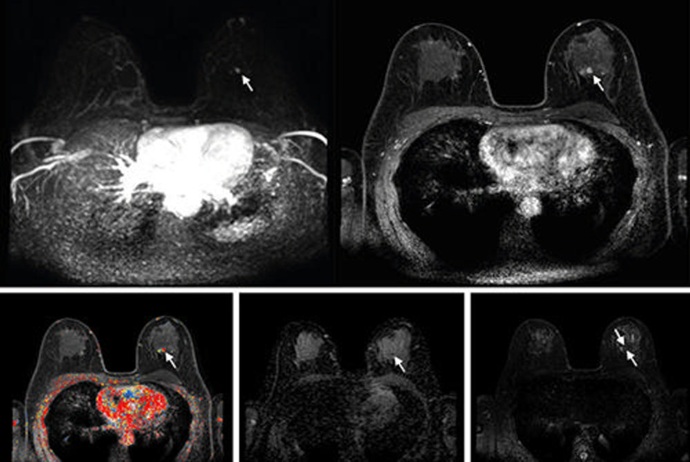
Shorter MRI Exam Effectively Detects Cancer in Dense Breasts
Women with extremely dense breasts face a higher risk of missed breast cancer diagnoses, as dense glandular and fibrous tissue can obscure tumors on mammograms. While breast MRI is recommended for supplemental... Read moreUltrasound
view channel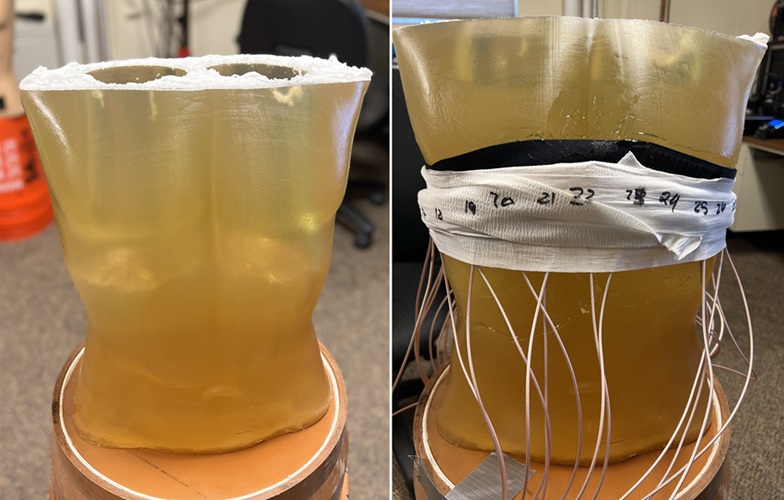
New Medical Ultrasound Imaging Technique Enables ICU Bedside Monitoring
Ultrasound computed tomography (USCT) presents a safer alternative to imaging techniques like X-ray computed tomography (commonly known as CT or “CAT” scans) because it does not produce ionizing radiation.... Read more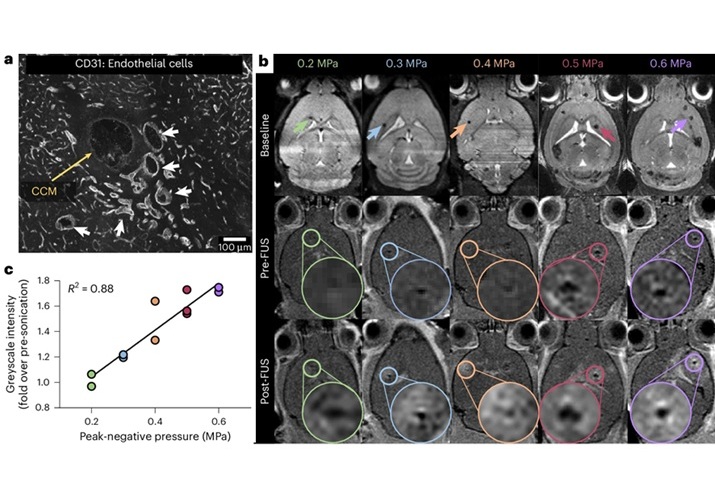
New Incision-Free Technique Halts Growth of Debilitating Brain Lesions
Cerebral cavernous malformations (CCMs), also known as cavernomas, are abnormal clusters of blood vessels that can grow in the brain, spinal cord, or other parts of the body. While most cases remain asymptomatic,... Read moreNuclear Medicine
view channel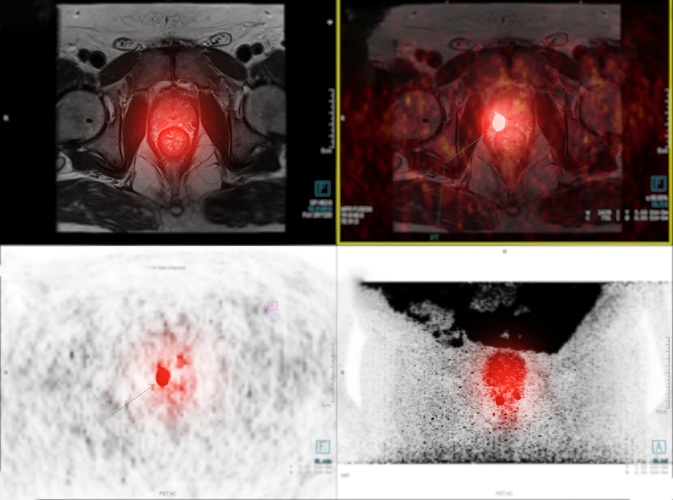
New Imaging Approach Could Reduce Need for Biopsies to Monitor Prostate Cancer
Prostate cancer is the second leading cause of cancer-related death among men in the United States. However, the majority of older men diagnosed with prostate cancer have slow-growing, low-risk forms of... Read more
Novel Radiolabeled Antibody Improves Diagnosis and Treatment of Solid Tumors
Interleukin-13 receptor α-2 (IL13Rα2) is a cell surface receptor commonly found in solid tumors such as glioblastoma, melanoma, and breast cancer. It is minimally expressed in normal tissues, making it... Read moreGeneral/Advanced Imaging
view channel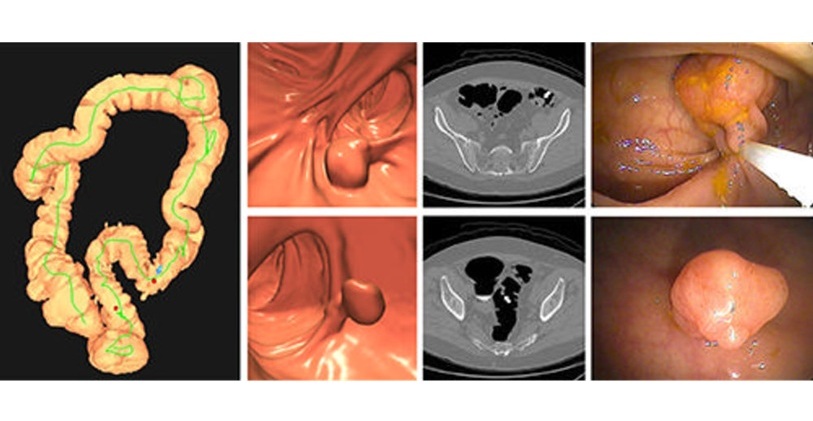
CT Colonography Beats Stool DNA Testing for Colon Cancer Screening
As colorectal cancer remains the second leading cause of cancer-related deaths worldwide, early detection through screening is vital to reduce advanced-stage treatments and associated costs.... Read more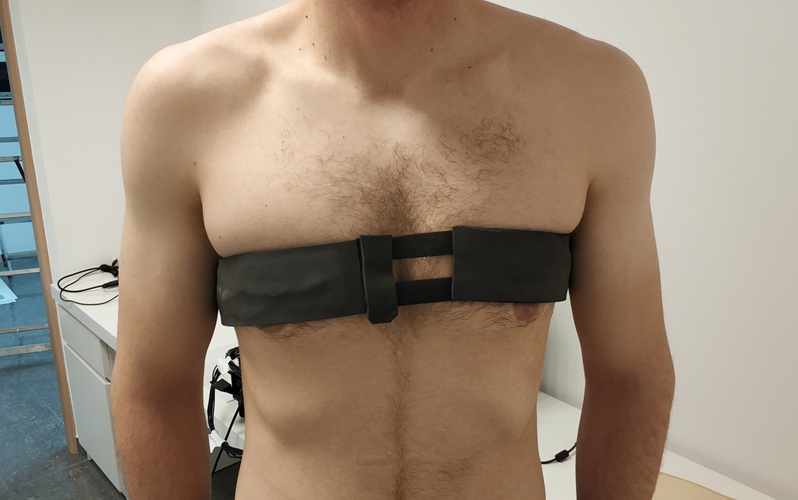
First-Of-Its-Kind Wearable Device Offers Revolutionary Alternative to CT Scans
Currently, patients with conditions such as heart failure, pneumonia, or respiratory distress often require multiple imaging procedures that are intermittent, disruptive, and involve high levels of radiation.... Read more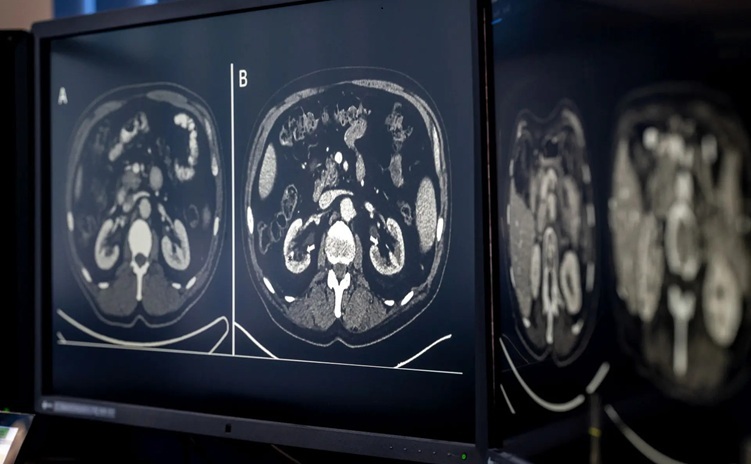
AI-Based CT Scan Analysis Predicts Early-Stage Kidney Damage Due to Cancer Treatments
Radioligand therapy, a form of targeted nuclear medicine, has recently gained attention for its potential in treating specific types of tumors. However, one of the potential side effects of this therapy... Read moreIndustry News
view channel
GE HealthCare and NVIDIA Collaboration to Reimagine Diagnostic Imaging
GE HealthCare (Chicago, IL, USA) has entered into a collaboration with NVIDIA (Santa Clara, CA, USA), expanding the existing relationship between the two companies to focus on pioneering innovation in... Read more
Patient-Specific 3D-Printed Phantoms Transform CT Imaging
New research has highlighted how anatomically precise, patient-specific 3D-printed phantoms are proving to be scalable, cost-effective, and efficient tools in the development of new CT scan algorithms... Read more
Siemens and Sectra Collaborate on Enhancing Radiology Workflows
Siemens Healthineers (Forchheim, Germany) and Sectra (Linköping, Sweden) have entered into a collaboration aimed at enhancing radiologists' diagnostic capabilities and, in turn, improving patient care... Read more











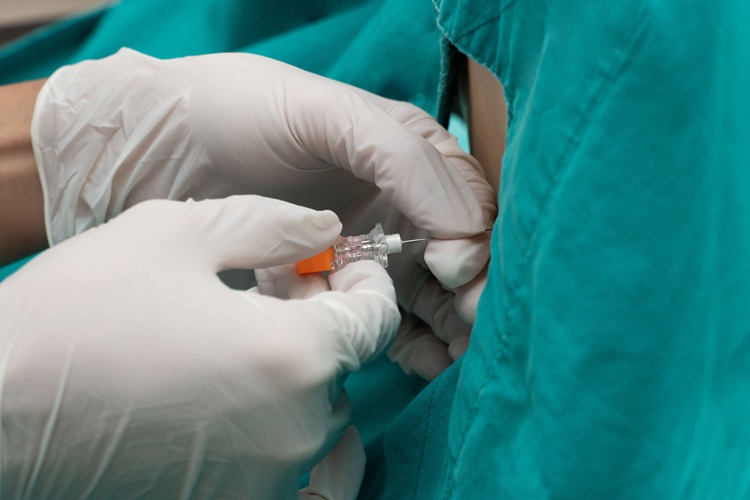
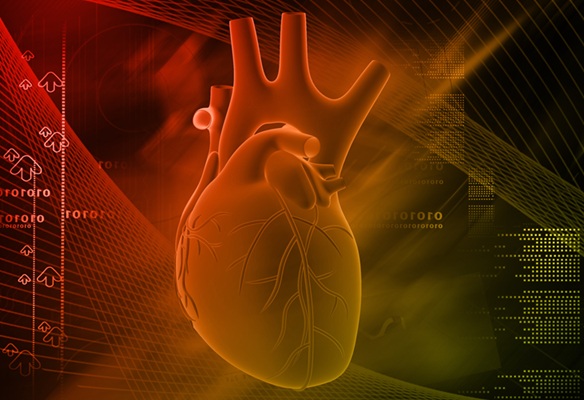
.jpeg)



